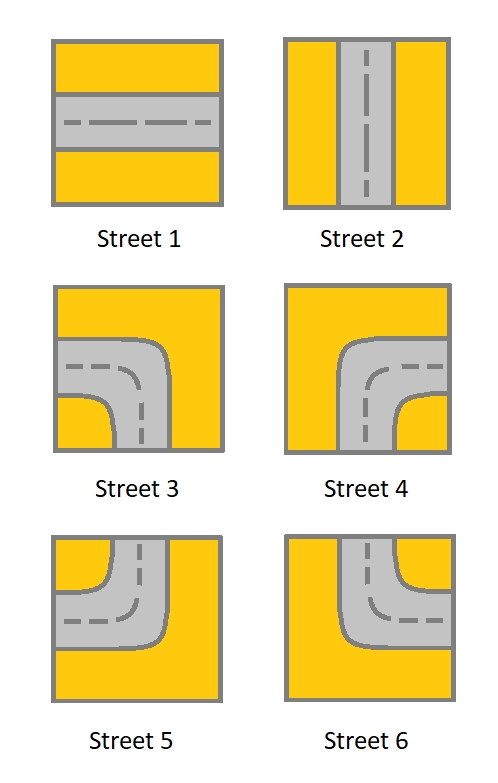1391. Check if There is a Valid Path in a Grid
https://leetcode.com/problems/check-if-there-is-a-valid-path-in-a-grid/
Given a m x n grid. Each cell of the grid represents a street. The street of grid[i][j] can be:
1 which means a street connecting the left cell and the right cell.
2 which means a street connecting the upper cell and the lower cell.
3 which means a street connecting the left cell and the lower cell.
4 which means a street connecting the right cell and the lower cell.
5 which means a street connecting the left cell and the upper cell.
6 which means a street connecting the right cell and the upper cell.

You will initially start at the street of the upper-left cell (0,0). A valid path in the grid is a path which starts from the upper left cell (0,0) and ends at the bottom-right cell (m - 1, n - 1). The path should only follow the streets.
Notice that you are not allowed to change any street.
Return true if there is a valid path in the grid or false otherwise.
Example 1:
Example 2:
Example 3:
Example 4:
Example 5:
Constraints:
m == grid.lengthn == grid[i].length1 <= m, n <= 3001 <= grid[i][j] <= 6
给由如图所示拼图组成的地图,问能否从(0, 0)走到(M-1, N-1)。实体图能否到达=>BFS/DFS。将拼图encode成可以走的方向,检查下个点是否可达,可达时再检查能否从下个点回来,如果都能说明下个点和当前点确实是通的。
Last updated
Was this helpful?